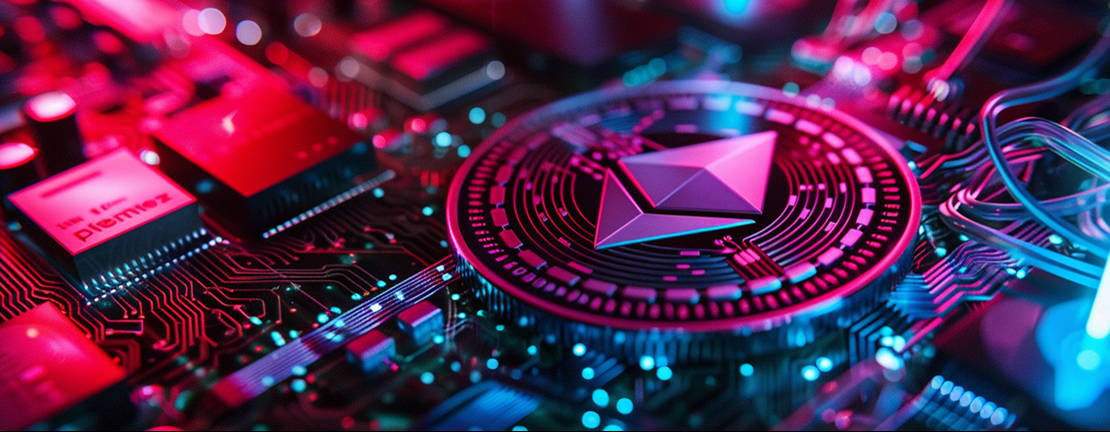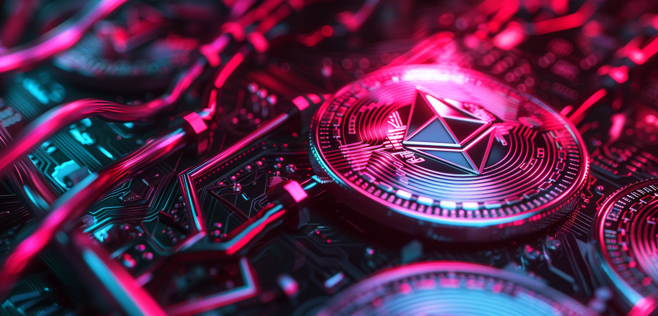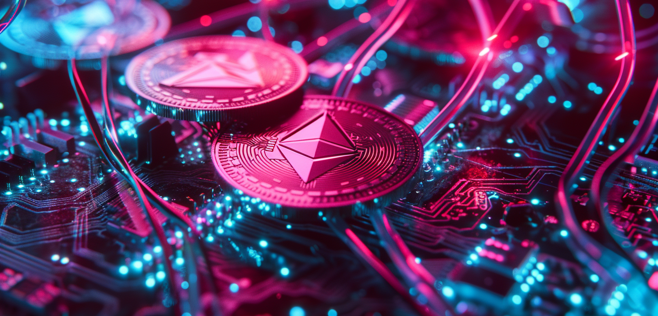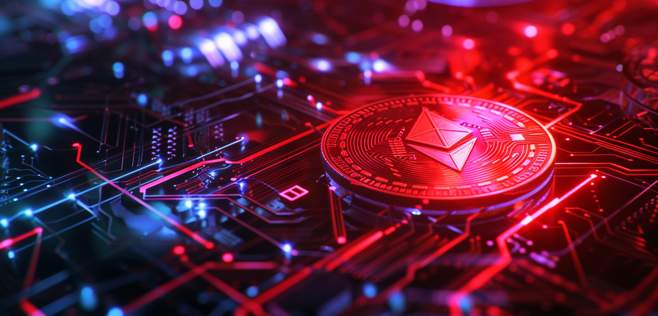 15 Sep 2024
15 Sep 2024Wrapped Tokens and IoT: Connecting Real-World Assets to Ethereum

Wrapped tokens have emerged as a pivotal innovation in the blockchain ecosystem, allowing real-world assets to be represented and traded on blockchain networks like Ethereum. By creating blockchain-based versions of physical and traditional assets, wrapped tokens enable seamless integration and liquidity across decentralized platforms. Meanwhile, the Internet of Things (IoT) is revolutionizing industries by connecting everyday physical objects to the internet, allowing for real-time data exchange and automation.
As the significance of both wrapped tokens and IoT continues to grow, their intersection presents a powerful opportunity: connecting real-world assets to the Ethereum blockchain through IoT technology. This article explores how this integration can enhance transparency, efficiency, and security in asset management and transactions, paving the way for a more interconnected and digitized future.

Wrapped Tokens Explained
Wrapped tokens are digital assets that represent real-world or other blockchain-based assets on a different blockchain, typically Ethereum. They are essentially tokenized versions of these assets, allowing them to be used within the ecosystem of the host blockchain. This is achieved by "wrapping" the asset, creating a pegged token that holds a value equivalent to the underlying asset.
Wrapped tokens work by locking the original asset in a smart contract and minting an equivalent amount of the wrapped token on the target blockchain. This process ensures that the wrapped token maintains a 1:1 peg with the underlying asset, providing users with the ability to trade, stake, or use these tokens in various decentralized finance (DeFi) applications while benefiting from the liquidity and versatility of the host blockchain.
Common examples of wrapped tokens include Wrapped Bitcoin (WBTC), which brings Bitcoin’s value and liquidity to Ethereum, and Wrapped Ether (WETH), which allows Ether to be used in ERC-20 compatible applications. These tokens play a crucial role in enhancing interoperability and expanding the utility of assets across different blockchain networks, enabling users to leverage their holdings in a broader array of financial activities.

The Intersection of Wrapped Tokens and IoT
The Internet of Things represents a network of interconnected devices that can collect, exchange, and act on data in real time. By integrating IoT with blockchain technology, these devices can securely and transparently transmit real-world data to the blockchain, enhancing the reliability and traceability of information.
Wrapped tokens play a crucial role in this integration by representing real-world assets, such as commodities, property, or even data streams, as blockchain tokens. Through IoT, these assets can be continuously tracked and monitored, with the data being recorded on the blockchain. This interaction allows wrapped tokens to act as a bridge, connecting the physical world with digital platforms on Ethereum, making the assets easier to manage, trade, and utilize in various DeFi applications.
For example, an IoT device could monitor the condition of a shipment in real-time, and this data could be tokenized through a wrapped token on Ethereum. This provides a seamless and automated way to track, verify, and transact real-world assets, enhancing both efficiency and transparency in asset management and trading.

Connecting Real-World Assets to the Ethereum Blockchain
Integrating wrapped tokens with IoT devices offers a powerful way to bring real-world assets onto the Ethereum blockchain, enhancing asset management and transaction efficiency.
Tokenization of Physical Assets
IoT devices play a crucial role in tracking and managing physical assets by providing real-time data that can be tokenized on the blockchain. This process allows physical items such as commodities, real estate, and vehicles to be represented as digital tokens, which can be easily traded, transferred, or utilized within decentralized applications. For example, a vehicle equipped with IoT sensors can transmit data about its usage, location, and condition, allowing the vehicle’s ownership or usage rights to be tokenized and managed on the blockchain.
Data Integrity and Transparency
Wrapped tokens ensure the authenticity and provenance of IoT data, leveraging blockchain's inherent transparency and immutability. This integration guarantees that the information recorded by IoT devices remains accurate and verifiable, providing a secure and reliable way to maintain records of asset information. Blockchain technology eliminates the risk of data tampering, offering an indisputable history of an asset’s lifecycle, which is particularly valuable in supply chain management and other industries where trust and transparency are paramount.
Automation and Smart Contracts
Smart contracts on Ethereum can automate various processes related to asset management, such as payments, ownership transfers, and regulatory compliance. By linking IoT data with smart contracts, transactions can be executed automatically when predefined conditions are met. For instance, a smart contract could automatically release payment for a shipment once an IoT sensor confirms that the goods have arrived in satisfactory condition. This automation reduces the need for intermediaries, lowers costs, and speeds up transaction times, making asset management more efficient and scalable.

Use Cases and Applications
The combination of wrapped tokens and IoT devices has the potential to revolutionize various industries by enhancing transparency, efficiency, and automation. Here are some key use cases:
Supply Chain Management
By integrating IoT devices and wrapped tokens, companies can track and verify goods at every stage of the supply chain. IoT sensors can capture real-time data about the location, condition, and movement of goods, while wrapped tokens represent these assets on the blockchain, providing an immutable record of their journey. This ensures transparency and reduces the risk of fraud, counterfeiting, and inefficiencies. For example, companies like IBM and Maersk have utilized blockchain and IoT to enhance their supply chain processes, demonstrating significant improvements in traceability and accountability.
Asset Tracking and Management
Wrapped tokens, when paired with IoT technology, enable the efficient tracking, monitoring, and management of various assets, from heavy machinery to everyday consumer products. IoT devices provide real-time updates on asset status, while wrapped tokens allow these assets to be digitally represented and managed on the blockchain. This combination not only improves operational efficiency but also enhances asset utilization and maintenance. Real-world examples include platforms like Ambrosus, which use IoT and blockchain to manage food and pharmaceutical assets, ensuring quality and safety throughout the supply chain.
Smart Cities and Infrastructure
The integration of wrapped tokens and IoT into urban infrastructure can drive significant improvements in smart city management and efficiency. By connecting utilities, transportation systems, and other critical infrastructure components to the blockchain, cities can automate and optimize operations such as energy distribution, traffic management, and waste disposal. IoT sensors gather data in real-time, while wrapped tokens facilitate the exchange of information and services on the blockchain, ensuring transparency and accountability. Projects like IOTA are already exploring these possibilities, focusing on connecting urban infrastructure to blockchain for better management and decision-making.

Benefits of Integrating Wrapped Tokens with IoT
The integration of wrapped tokens with IoT technology brings numerous advantages, transforming how real-world assets are managed and traded on the blockchain.
Enhanced Asset Liquidity
Tokenizing real-world assets with wrapped tokens significantly increases their liquidity. By converting physical assets into digital tokens, asset owners can unlock new opportunities for fractional ownership and easier trading. This makes it possible for investors to buy and sell fractions of high-value assets, such as real estate or rare commodities, rather than needing to transact the entire asset. Platforms like RealT and Securitize have already begun utilizing tokenization to provide more accessible and liquid markets for traditionally illiquid assets.
Improved Efficiency and Cost Reduction
Integrating IoT and wrapped tokens reduces reliance on manual processes and intermediaries, streamlining operations and cutting costs. Automation through smart contracts allows for the execution of tasks such as payments, compliance checks, and asset transfers without human intervention, speeding up processes and minimizing errors. Additionally, transparent data sharing via blockchain reduces the need for costly audits and reconciliations, as every transaction and asset status update is automatically recorded and verified.
Security and Compliance
The combination of blockchain and IoT significantly enhances the security of asset management. Blockchain provides a secure and immutable ledger for all IoT data, ensuring that asset information remains accurate and tamper-proof. This is crucial for maintaining the integrity of asset tracking and management systems. Moreover, blockchain’s transparency and ability to provide real-time audits help organizations comply with regulatory standards, as all data is easily accessible and verifiable. This can lead to greater trust and acceptance of blockchain-based asset management solutions by regulators and industry stakeholders.

Challenges and Considerations
While the integration of wrapped tokens with IoT offers numerous benefits, there are several challenges and considerations that need to be addressed to fully realize its potential.
Technical Challenges
One of the primary technical challenges is the seamless integration between IoT devices and blockchain networks. IoT devices, often designed for low-cost and low-power operations, may struggle with the computational and bandwidth requirements needed to interact directly with blockchain platforms. Additionally, the scalability of blockchain networks can be a concern when dealing with the vast amounts of data generated by IoT devices. Ensuring that the blockchain can handle high transaction volumes without compromising performance or incurring excessive costs is a significant hurdle.
Security Risks
IoT devices are often vulnerable to security threats, such as hacking, data breaches, and unauthorized access. These vulnerabilities can compromise the integrity of the data being recorded on the blockchain, posing risks to the security of the entire connected ecosystem. Strategies to mitigate these risks include implementing robust security measures on IoT devices, such as encryption, secure boot processes, and regular firmware updates. Furthermore, using blockchain’s inherent security features, like cryptographic hashing and decentralized validation, can help safeguard the data integrity of tokenized assets.
Regulatory and Legal Challenges
Navigating the regulatory landscape for tokenized assets and IoT data is complex, as laws and regulations vary significantly across jurisdictions. There are legal implications surrounding the tokenization of assets, particularly when it comes to defining ownership rights, compliance with securities laws, and handling cross-border transactions. Additionally, data privacy regulations, such as GDPR in Europe, must be considered when IoT devices collect and transmit personal or sensitive data. To address these challenges, businesses need to stay informed about evolving regulations and work with legal experts to ensure compliance in the tokenization and management of assets through IoT and blockchain technologies.

Future Trends and Developments
As technology continues to evolve, the integration of IoT and blockchain is expected to become more seamless, with emerging protocols and advancements playing a key role in enhancing connectivity between these two worlds. Innovations such as improved consensus algorithms, lightweight blockchain solutions tailored for IoT environments, and enhanced interoperability frameworks will be instrumental in overcoming current technical barriers. These advancements are likely to drive the adoption of wrapped tokens and IoT across various industries, from supply chain management to smart cities, enabling more efficient and secure asset tracking and management.
The evolution of token standards is also set to play a crucial role in the future of wrapped tokens and IoT. As the need for more precise and flexible representation of real-world assets on the blockchain grows, new token standards are expected to emerge. These standards will aim to better capture the complexities of physical asset ownership, compliance, and transaction execution, making tokenized assets more practical and widely acceptable. Wrapped tokens will likely evolve to accommodate these new standards, expanding their role in asset management and enhancing their integration with IoT applications.
In conclusion, the combination of wrapped tokens and IoT has the potential to revolutionize the way we manage and transact real-world assets by connecting them to the Ethereum blockchain. This integration offers significant benefits in terms of liquidity, efficiency, and security, while also presenting challenges that need to be addressed as the technology matures. As advancements in blockchain and IoT continue, and as new token standards are developed, the future holds exciting possibilities for this intersection of technologies. Ultimately, the convergence of blockchain, IoT, and tokenization is poised to transform asset management and transactions, paving the way for a more connected and efficient digital economy.

 Get RateX Pro
Get RateX Pro
 06 Jun 2024
06 Jun 2024



